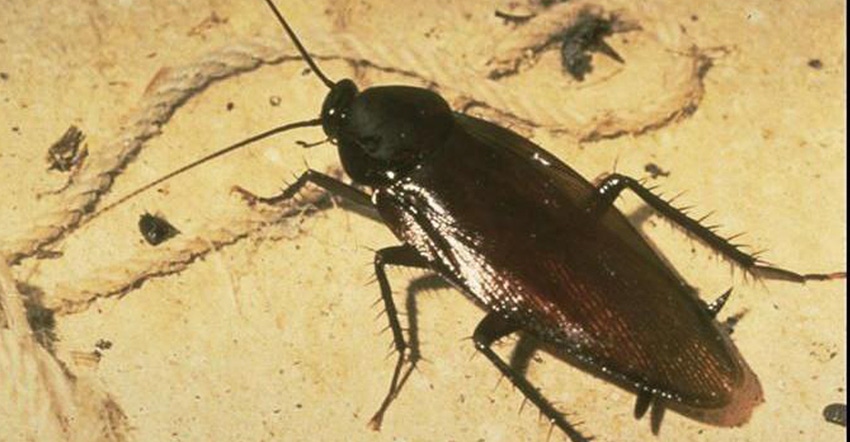December 7, 2018

Like all living things, insects are constantly searching for food, water and shelter, so it’s likely many of them will try to come indoors during the winter months, said Wizzie Brown, Texas A&M AgriLife Extension Service integrated pest management specialist, Travis County.
“During extreme temperatures, insects try to find a more comfortable environment, preferably one where they can also locate food and water,” Brown said.
Brown said two of the most unwanted insect pests — scorpions and cockroaches — are among those insects likely to try and enter the home during cold weather.
“While Texas has 18 scorpion species, the striped bark scorpion, which is yellowish-tan with two dark stripes running parallel along its back, is the most common in South Central Texas,” she said.
Brown said the two outdoor species of cockroach “most likely to make people panic” should they get inside the house are the smoky brown and American cockroach.
“These are two of the larger outdoor cockroach species found in this area of Texas,” she said. “And the American cockroach can be particularly disturbing as it has been known to fly directly at people.”
Molly Keck, AgriLife Extension integrated pest management specialist for Bexar County, said South Central Texas residents should also expect visits from black crazy ants as the temperature drops.
“Black crazy ants are mainly a nuisance as they can get indoors and travel along thresholds in strange and peculiar patterns,” she said. “They are most likely to get in by way of potted plants being brought indoors or by hitching a ride on a cardboard box. Of course, they will also look for any external opening that will allow them to get inside.”
Both entomologists said the best way to keep these pests outdoors is by exclusion.
“Fortunately, many of the actions you take to exclude insects are also actions you would take to maintain or winterize your home,” Brown said. “For example, outdoor cockroaches often make their home in the wet leaves that accumulate in your gutters. If you’re putting up Christmas lights, this would be a good time to clean out those gutters.”
However, she said, if the typical indoor species of cockroaches for the area — German cockroaches — are inside the home, it is best to use a cockroach bait, as these are easy to use and do not require touching the insecticide.
Keck said black crazy ants don’t typically respond to ant baits, so the best means of exclusion is an insecticide barrier, preferably a long-lasting insecticide gel labeled for them, along any threshold where they seem to be entering the home.
“It’s also a good idea to make sure there are no leaks or there is no water settling around sinks, lavatories or toilets – any place where the insects might go looking for water,” she said.
The entomologists also provided the following tips to help exclude these and other pests from the home:
Keep debris and firewood away from the house.
Prune any trees or shrubs touching or hanging over the house.
Keep grass near or touching the house closely mowed.
Replace weather-stripping around doors and windows as necessary.
Fill weep holes in stone, brick or stucco homes with steel wool, copper mesh or screen wire.
Seal cracks, crevices and areas of pipe penetration in exterior walls with sealant.
Keep window screens in good repair and make sure they fit tightly into the window frame.
Treat the foundation of the home with a pesticide with ingredients such as permethrin, cypermethrin or deltamethrin.
Apply pesticides around doors, windows, eaves and other potential points of entry. Indoor treatments should be directed at potential points of entry as well as corners, cracks and crevices. Follow label directions for dosage, mixing and application methods.
About the Author(s)
You May Also Like




